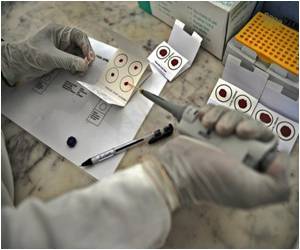
It can take days for doctors to determine if a patient infected with malaria carries a drug-resistant version of the disease. The same is true of tuberculosis.
But a new testing device could reduce that time lag to 15 minutes, potentially helping to ensure that patients are correctly treated right away, says the company developing this device.
United Kingdom company QuantuMDX now has a working prototype for a device intended to quickly test a sample of blood, sputum (saliva mixed with mucus) or even tumor cells for genetic markers that provide information to guide a doctor’s decisions on how to treat a patient.
“We want to put a full diagnostic test into the palms of health professionals’ hands,” said Elaine Warburton, chief executive officer of QuantuMDX and the companys cofounder.
The prototype is about the size of an iPad 5, or 6.6 by 9.4 inches (17 by 24 centimeters), but thicker. In about six months, Warburton said she anticipates the device will be reduced to about the size of an iPad mini, 5.3 by 7.9 in. (13 by 200 cm).
The device, currently known as Q-POC (pronounced Q-pock), is still a long way from being used in the clinic. The company still has work to do on the cartridges for use with the handheld prototype, and it needs to run clinical trials testing the device, followed by regulatory approval from bodies such as FDA, Warburton told LiveScience in an email.
Earlier this month at the Consumer Electronics Show in Las Vegas, Jonathan O’Halloran, inventor of the technology and the company’s cofounder, announced plans to launch a crowdfunding campaign. The campaign is expected to begin on Feb. 12 on the site Indigogo.com, to support further development of the Q-POC. The company is also interested in suggestions for a new name and design for the device, Warburton said.
If all goes well, QuantuMDX anticipates commercially launching the device and malaria test cartridge in Africa in 2015, she said.
Source: Fox news





 Diseases like malaria and jaundice have claimed 20 lives since last week in Longding district of Arunachal Pradesh, an official report said today.
Diseases like malaria and jaundice have claimed 20 lives since last week in Longding district of Arunachal Pradesh, an official report said today. Information and Public Relation Department, Thangwang Wangham, said that the situation is alarming as every day new cases are being reported.
Information and Public Relation Department, Thangwang Wangham, said that the situation is alarming as every day new cases are being reported.